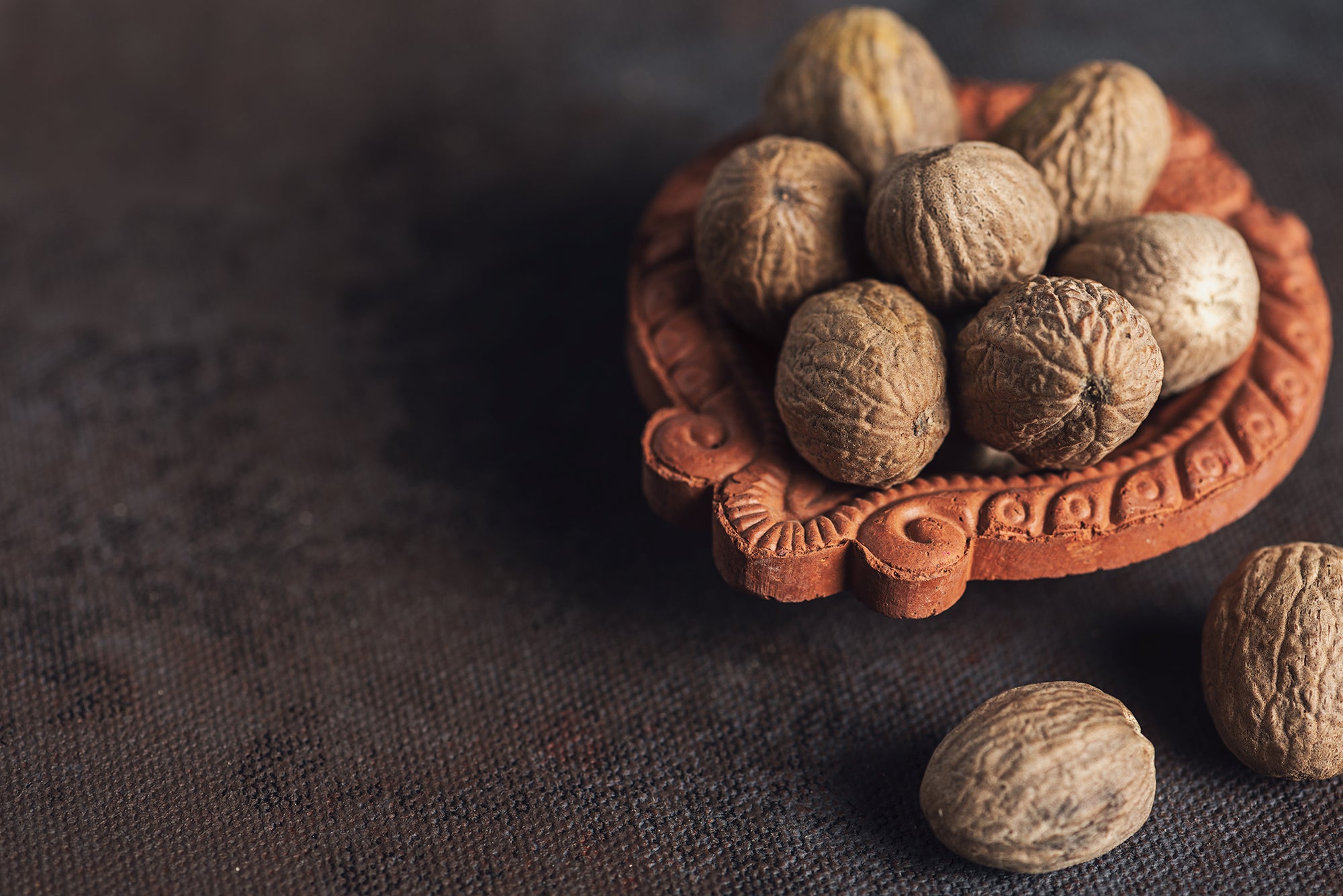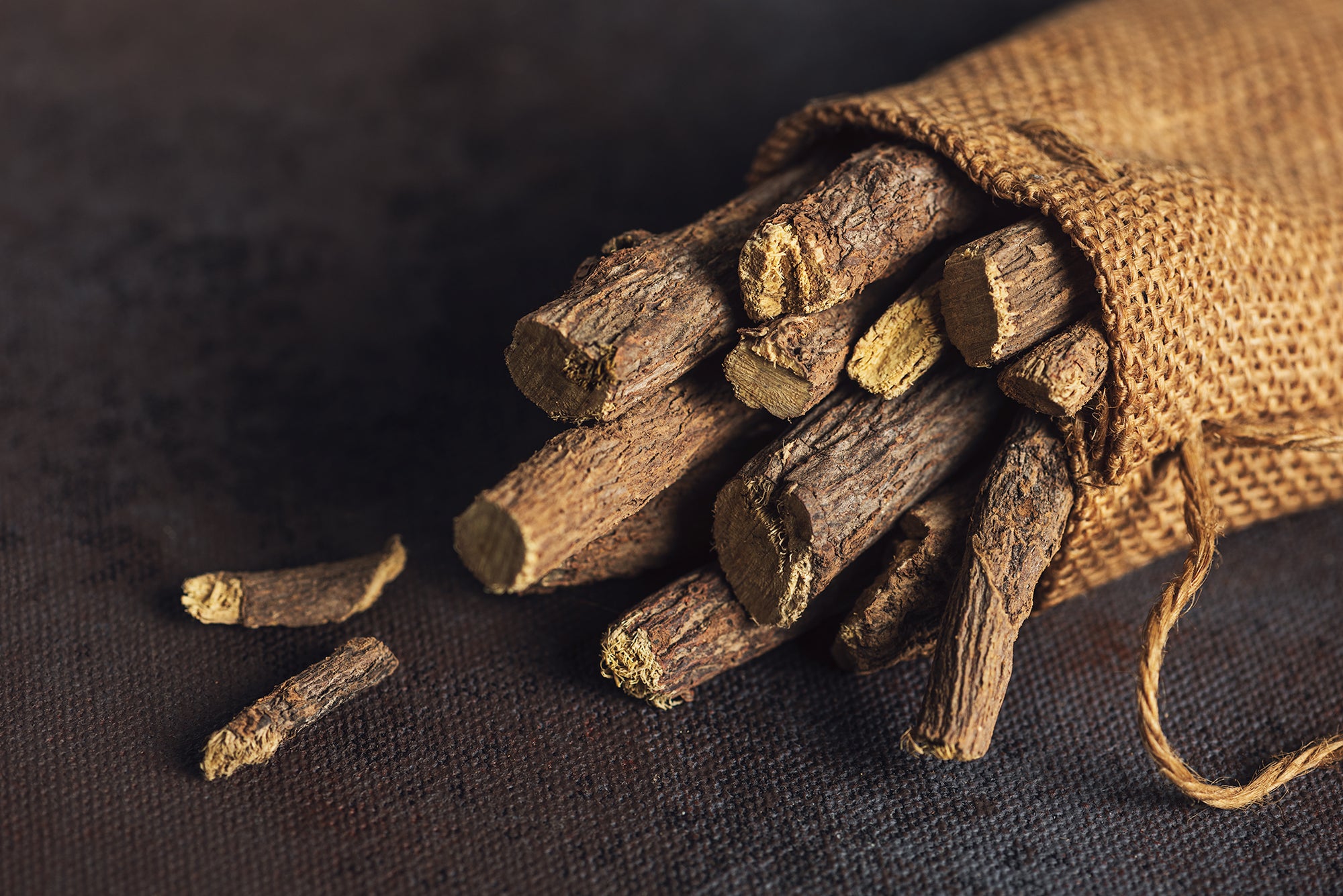Revered during the golden age of spice route, mace is a magical spice indeed. This lacy bright red aril (outer coating) of the nutmeg seed has a distinct character of its own.
Originally from the tropical forest of the Maluku Island in Indonesia, also known as the ‘Spice Island’, mace is used in cuisines all over the world.
Growing, Preparing And Storing Mace
Mace is derived from the nutmeg fruit. The nutmeg tree is evergreen with oblong shaped leaves and small yellow flowers. The fruit is light yellow and resembles an apricot, as it matures the fleshy part bursts open revealing the seed. The seed is dried until the inner nut rattles inside the shell, that edible oval shaped nut is Nutmeg. The aril covering the shell is Mace.
In its natural state mace is bright red and 35 mm in length, as it dries it loses it colors but develops its characteristic aroma.
This aromatic spice is extensively found in Indonesia, Southern India and Sri Lanka. The tree takes about 20 years to start bearing fruits and it fruits up to three times in a season.
The fresh mace is gently peeled away from the nutmeg shell. The entire lace is dried in shade for 3-4 days. Dried mace is sold as is or crushed and powdered before selling. The dried mace is mostly flattened and separated into ‘blades’ before being used in any cuisine. The flavor is so strong that one blade is enough to add the right amount of taste and aroma to any cuisine.
Ground mace has a longer shelf life when stored in an airtight container in a cool dark place.
Lacy Lavishness
One of the most sought after spices, mace has a pleasant taste and give saffron colored hue to the dishes. Though it is used in sweet dishes, mace really shines and is sought after for savory dishes. It is one of the main components in Indian garam masala powder and Moroccan rass-el-hanout. The flavor can become bitter if cooked for too long so usually mace is added towards the end of a cook as a finishing spice. Also, the mace blades should be removed before serving.
In Southeast Asia and China mace is used more for its medicinal properties than in cooking. The essential oil is extracted from the dried arils and has been used to aid in the relief of toothaches, muscular pains, nausea, healing digestive systems and more.
Mace is power packed with nutrients, including vitamin A, thiamin, Vitamin C, calcium, sodium, copper, iron, zinc, manganese, magnesium and more. Freshly prepared brew of mace and honey has been used to get relief from nausea and indigestion.
Mace And Ayurveda
Known as Jatisasyya or Jatiphala, mace has been known to supplement pitta and pacify kapha and vata doshas.
It has been used in various concoctions and brews as remedy for insomnia, congestion, rheumatism, impotence, colic pains, erectile dysfunction, asthma and is also an excellent tonic for the brains.
We have used Mace in:
Quick Facts
| Name: | Mace |
| Scientific Name: | Myristica fragrans |
| Cultivated in: | Indonesia, South India, Sri Lanka |
| Other names: | Macis (French), Muskatlute(German) |
| Habitat | Tropical climate with humid conditions |
| Soil | Clay loam, sandy loam, red laterite soil |
| Plant Size | 18m |
| Aroma | Sweet Peppery |
| Plant parts used | Fruit |
| Major Nutrients | Vitamin A Calcium Vitamin C Iron Copper Magnesium Potassium Proteins Carbohydrate Folates |
Known As In
| Hindi | Javithri |
| Marathi | Jaipatri |
| Gujrati | Javintri |
| Telugu | Japathri |
| Malayalam | Jathipathri |
| Tamil | Jadipattri |
| Kannada | Kandan Lippili |
Ayurvedic Facts
| Sanskrit Name: | Jatiphala, Jatisassya |
| Taste: | Pungent, Bitter |
| Energitics: | Hot |
| Effect on Doshas: | Supplements pitta, pacifies kapha and vata |
| Used for Treating: | Insomnia, congestion, rheumatism, colic, indigestion, impotence, erectile dysfunctions, asthma, headache, jaundice |





.png?v=1668878203)



